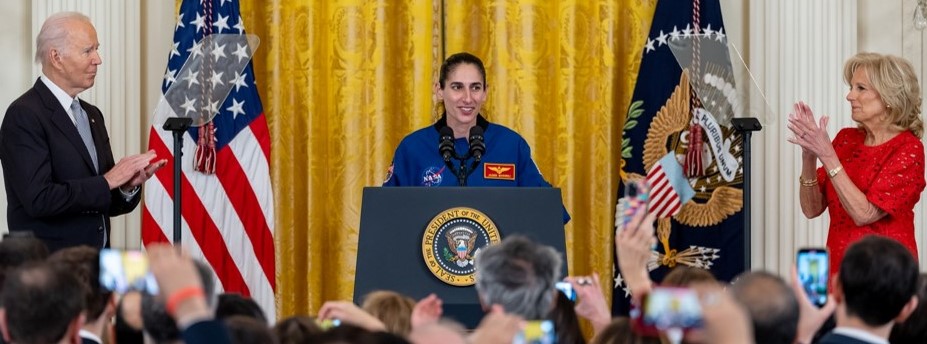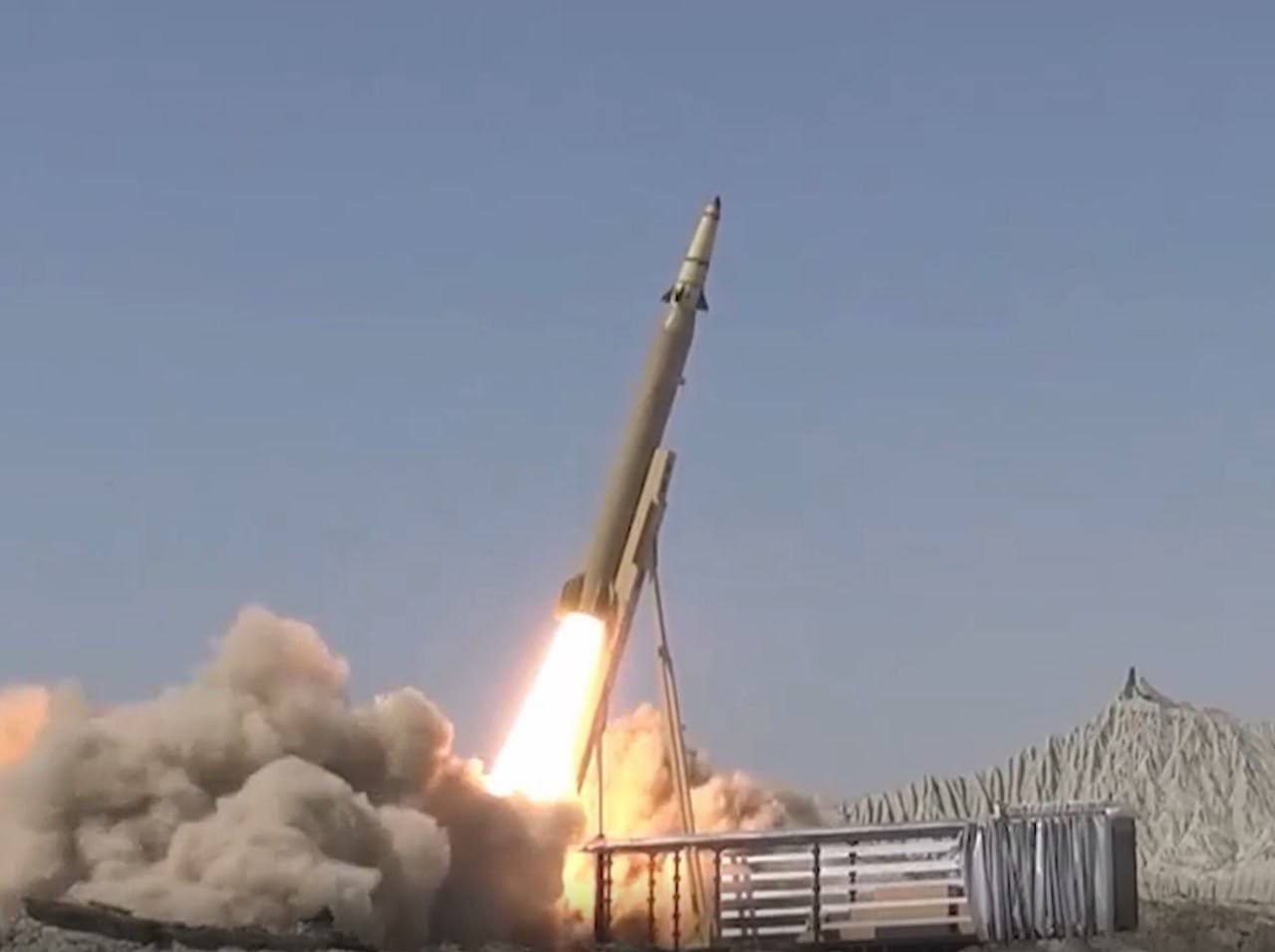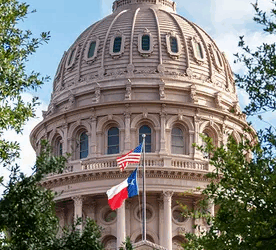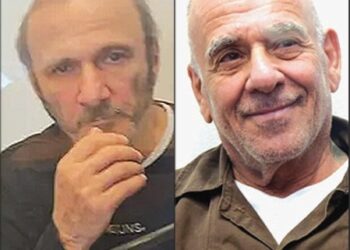September 15, 2023
 Iranian-American Yasmin Moghbeli was blasted into space August 26 as the commander of the latest crew of astronauts being sent to the International Space Station, where they are expected to stay more than six months and have some Persian cuisine along the way.
Iranian-American Yasmin Moghbeli was blasted into space August 26 as the commander of the latest crew of astronauts being sent to the International Space Station, where they are expected to stay more than six months and have some Persian cuisine along the way.
The capsule gracefully soared aloft atop the Falcon 9 rocket from NASA’s Kennedy Space Center in Florida.
Comprising the mission team are NASA’s Moghbeli, making her first trip into space; Danish astronaut Andreas Mo-gensen, representing the European Space Agency; Satoshi Furukawa from the Japan Aerospace Exploration Agency (JAXA); and Russian cosmonaut Konstantin Borisov of Ros-cosmos. Moghbeli is the commander of the mission.
Following the successful launch, Moghbeli communicated her admiration for the team’s performance, addressing SpaceX mission control from within the Crew Dragon capsule. “Space travel is difficult, but you make it look easy,” she said, acknowledging the collaborative spirit of the crew. “We’re a united team with a common mission,” she continued. “Go Crew-7. Awesome ride.”
Celebrating the diversity inherent in the Crew-7 team, Commander Moghbeli highlighted the symbolic significance of their diverse nationalities. “We are extremely proud and I know I personally am humbled to be a member of this incredible crew, where, if you look at our four patches, you’ll see a different nation’s flag on each one,” she emphasized.
 Her flag is the stars and stripes. But everyone is aware that she was born of Iranian parents.
Her flag is the stars and stripes. But everyone is aware that she was born of Iranian parents.
Something else is different about this group’s visit to space. NASA has sent along an appropriate international cuisine Persian herbed stew, Danish chocolate and Japanese mackerel.
Moghbeli, Mogensen, Furu-kawa and Borisov joined the seven astronauts already on the orbiting laboratory.
The Crew-7 astronauts spent about five days taking over operations from the SpaceX Crew-6 astronauts, who have been on the space station since March.
This mission marks the eighth flight operated by NASA and SpaceX as part of the agency’s commercial crew program, which has been ferrying astronauts to the space station since SpaceX’s first crewed mission in 2020.
The Crew-7 astronauts will pore through a slate of experiments. The research will include investigating the potential risk of dispersion of bacteria and fungi from human-led space missions. The team will analyze whether the microorganisms can be expelled from the space station’s vents and spewed into the vacuum of space.
Another project, from the European Space Agency, will investigate how sleeping in the microgravity environment differs from Earth by analyzing astronauts’ brain waves while they doze off. Yet another experiment will look at the formation of biofilms in wastewater on the space station, which could be key to finding better ways to recycle water for drinking and hygiene while in space. (Yes, astronauts have long used recycled sweat and urine to drink and shower on the station.)
Moghbeli, 40, a first-time space traveler, hopes to show Iranian girls that they, too, can aim high. “Belief in yourself is something really powerful,” she said before the flight.
In Iran, the state media reported on her launch, but did not laud her. The media generally disparaged her, saying she isn’t Iranian because she was born in Germany and doesn’t speak Farsi—although she does speak Farsi. The news reports said she is not a space scientist and was only chosen because she is a pilot. The commanders of all space trips are pilots.
Commander Moghbeli was born in Bad Nauheim, Germany near Frankfurt to Iranian parents, but she considers Baldwin, New York, on Long Island, her hometown.
After graduating from high school, she earned her bachelor’s degree in aerospace engineering from the Massachusetts Institute of Technology (MIT) before gaining a master’s in aerospace engineering from the Naval Postgraduate School in Monterey, California.
Moghbeli also has military experience under her belt, including serving as a Marine Corps test pilot and logging more than 150 combat missions in the Middle East and 2,000 hours of flight time. She is an active duty Marine (which is what may have irked Tehran).
She was selected to join NASA’s astronaut corps in 2017, and the Crew-7 mission marks her first foray into space.
“This is something I’ve wanted to do for as long as I can remember,” Moghbeli said during a July 25 news conference. “One of the things I’m most excited about is looking back at our beautiful planet. Everyone I’ve talked to who has flown already has said that was kind of a life-changing perspective.”
Borisov became the third cosmonaut with Russia’s space agency, Roscosmos, to fly on a US-made spacecraft as part of a seat-swapping agreement inked between NASA and Roscosmos in 2022. The friction between Russia and the US over Ukraine has not impacted their cooperation on the Space Station.
Sharing rides to the space station has long been a tradition for NASA and Roscosmos, and the latter agency even was the sole transportation provider for years after NASA retired its space shuttle program in 2011.
SpaceX’s Crew Dragon and Russia’s Soyuz are currently the only vehicles capable of carrying astronauts to and from the space station.
SpaceX’s first-stage booster returned to Cape Canaveral several minutes after liftoff, an extra treat for the thousands of spectators gathered in the early-morning darkness. Other rockets just dump their boosters into the sea, but the SpaceX booster returns to earth and lands slowly so it can be used again.
























